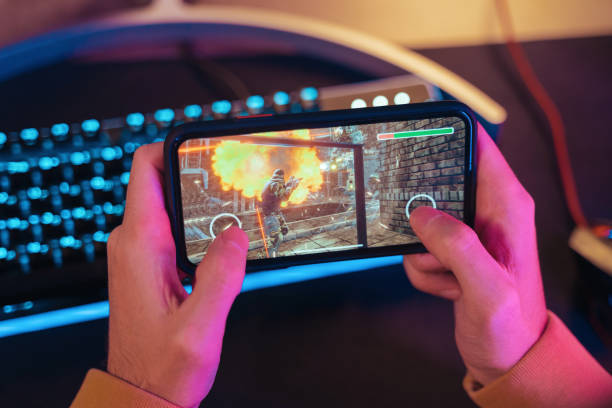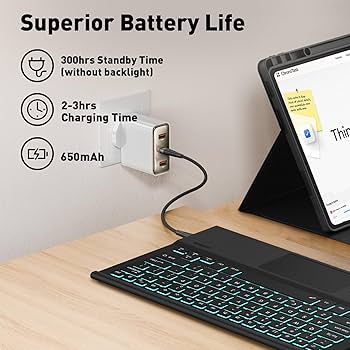Mobile gaming has undergone a seismic transformation. Once dismissed as a realm of simple puzzles and time-wasting distractions, it has erupted into the largest and most profitable segment of the global gaming industry. Today, smartphones are not just communication devices; they are powerful handheld consoles capable of delivering rich, complex, and graphically stunning experiences that rival those on traditional platforms. As major franchises once exclusive to PC and consoles make their grand entrance onto mobile screens, the lines between platforms are blurring, forcing a re-evaluation of what it means to be a “gamer.” This evolution isn’t just about convenience; it’s a story of technological prowess, innovative business models, and a fundamental shift in the global Gaming Culture. This article delves into the technical and cultural forces driving the mobile gaming revolution, exploring how it has evolved from a niche market into a dominant force in the entertainment world.
The Technological Ascent: How Smartphones Became Powerhouses
The journey of Mobile Gaming from rudimentary 2D titles to sprawling 3D open-worlds is a direct result of the relentless pace of hardware innovation. The pocket-sized devices we carry today pack a computational punch that would have been the envy of PC Gaming enthusiasts just over a decade ago. This technological leap has been the primary catalyst in elevating mobile’s status within the broader Video Games landscape.
The Power in Your Pocket: SoCs and Display Technology
At the heart of every modern gaming-capable smartphone is a System on a Chip (SoC). These marvels of engineering, like Apple’s A-series Bionic chips and Qualcomm’s Snapdragon 8-series, integrate a powerful CPU, a capable GPU, and RAM into a single, power-efficient package. The performance of these mobile GPUs has grown exponentially, now capable of real-time ray tracing and advanced shading techniques previously exclusive to high-end Graphics Cards and consoles. For context, the processing power of a flagship smartphone today surpasses that of the PlayStation 3 and Xbox 360, enabling developers to create visually breathtaking games like Genshin Impact and Call of Duty: Mobile with expansive worlds and intricate detail.
This raw power is paired with increasingly sophisticated display technology. High-refresh-rate screens (120Hz or even 144Hz) are now standard on many mid-range and premium phones, offering a level of smoothness and responsiveness that rivals dedicated Gaming Monitors. The vibrant colors and high resolutions of modern OLED and AMOLED displays create an immersive canvas for both fast-paced FPS Games and visually rich RPG Games, making the visual compromise between mobile and other platforms smaller than ever.
Beyond Touchscreens: A New Era of Peripherals
A significant hurdle for complex games on mobile has always been the limitation of touchscreen controls. However, the ecosystem of Gaming Peripherals for mobile has matured significantly. Devices like the Razer Kishi and Backbone One are high-quality Game Controllers that clip onto a smartphone, effectively transforming it into a handheld console akin to a Nintendo Switch. With native controller support becoming a standard feature in many mobile titles, the barrier for entry for players accustomed to Console Gaming is rapidly diminishing. This, combined with high-fidelity wireless Gaming Headsets, allows for a truly immersive and precise gaming experience that was previously unattainable on a mobile device.

Redefining Game Design and Monetization Models
The unique nature of the mobile platform has forced a complete rethinking of how games are designed, distributed, and monetized. While the hardware closes the gap with PCs and consoles, the software and business strategies often diverge, creating a distinct mobile gaming identity that is both innovative and, at times, controversial within the wider Gaming Community.
From Premium Price Tags to Free-to-Play Dominance
Unlike the traditional premium model of PC Gaming and Console Gaming, where players pay a large upfront cost for a complete game, the mobile market is overwhelmingly dominated by the free-to-play (F2P) model. This approach lowers the barrier to entry to zero, attracting a massive user base. Revenue is instead generated through in-app purchases (IAPs), which can range from purely cosmetic items, as seen in Fortnite, to gameplay-affecting mechanics.
Models like the “battle pass” offer players a structured path of progression with rewards for a recurring fee, while the “gacha” system, popularized in many Asian RPG Games, involves a lottery-like mechanic for acquiring new characters or items. This F2P paradigm, while incredibly lucrative and central to the Gaming Industry‘s growth, is often a point of contention for traditional gamers who are wary of “pay-to-win” mechanics and predatory monetization. Understanding these models is crucial for navigating the world of modern mobile games.
Designing for a Different Playstyle
Effective Game Design for mobile requires a deep understanding of its user base and use cases. Developers must cater to a wide spectrum of playstyles, from short, five-minute sessions during a commute to multi-hour raids in an MMORPG News-worthy title. This has led to design principles centered on:
- Intuitive UI/UX: Interfaces must be clean and functional on smaller touchscreens, avoiding the clutter that might work on a large monitor.
- Flexible Session Lengths: Games often incorporate both short-form content (daily quests, quick matches) and long-form content (story campaigns, dungeons) to accommodate different schedules.
- Live Service Operations: The most successful mobile titles are not static products but ongoing services. Constant updates, seasonal events, and new content are essential to maintain player engagement and spending. Game engines like Unity and Unreal Engine have become instrumental, with Unity News and Unreal Engine News frequently highlighting new tools that streamline mobile and cross-platform live service development.
The Convergence of Platforms and Gaming Cultures
Mobile gaming no longer exists in a vacuum. It is increasingly intersecting with the worlds of PC, console, and competitive gaming, creating a more unified and accessible global ecosystem. This convergence is reshaping not only how we play games but also who gets to play them at the highest level.

Mobile’s Impact on Esports and Competitive Gaming
The rise of mobile Esports News has been meteoric. Titles like PUBG Mobile, Arena of Valor, and League of Legends: Wild Rift command massive global audiences and feature prize pools in the millions of dollars. In many regions across Southeast Asia, Latin America, and India, mobile is the primary gaming platform due to the high cost of Gaming PCs and consoles. This has democratized Competitive Gaming, creating new superstars and fanbases outside the traditional epicenters of esports. The skill ceiling in mobile MOBA Games and Battle Royale titles is incredibly high, dispelling the myth that mobile gaming lacks depth and competitive integrity.
Cloud Gaming: The Ultimate Platform Unifier
The final frontier of platform convergence is Cloud Gaming. Services like Xbox Cloud Gaming and NVIDIA GeForce NOW leverage the power of remote servers to stream AAA Games directly to any device with a screen and an internet connection, including smartphones. This revolutionary Gaming Tech effectively turns a standard mobile phone into a high-end gaming rig. A player can now seamlessly play the latest title from the Xbox News or Steam News feed on their TV, switch to their Gaming Laptop, and then continue their session on their phone while on the go. This technology makes the hardware in your hand less important than the ecosystem you’re invested in, fundamentally changing the definition of platform exclusivity and accessibility.
The Player’s Perspective: Bridging the Divide
Despite its commercial success and technological advancements, a cultural divide persists between the mobile gaming audience and segments of the traditional PC and console communities. Understanding this friction is key to appreciating the platform’s future trajectory.
Why Traditional Gamers Remain Skeptical
For many veteran gamers, the announcement of a beloved franchise’s next installment as a “mobile-only” title can be met with disappointment. This skepticism is often rooted in several key concerns:
- Aggressive Monetization: The prevalence of gacha mechanics and IAPs that can feel necessary for progression is a major departure from the one-time purchase model of most AAA Games.
- Simplified Gameplay: To appeal to a broader audience and work with touch controls, mobile adaptations of complex series like strategy or role-playing games sometimes feature simplified mechanics, which can feel like a “dumbing down” of the core experience.
- Perception of Quality: Despite the existence of high-quality titles, the mobile market is also flooded with low-effort clones and asset flips, which can tarnish the platform’s overall reputation.
Recommendations for Exploration
For PC or console gamers looking to explore what modern mobile gaming has to offer, it’s helpful to approach the platform with an open mind and a strategic eye. Consider these tips:
- Look for Premium Experiences: Not all mobile games are F2P. There is a thriving market for premium Indie Games and ports of classic titles that offer a complete, ad-free experience for a single price.
- Invest in a Controller: For action games, RPGs, or any title with complex controls, a dedicated mobile Game Controller is a game-changer, providing the tactile feedback and precision you’re used to.
- Understand the F2P Model: When trying a F2P game, take time to understand its economy. Many games are perfectly enjoyable without spending money, but it’s important to identify if progression will eventually hit a “paywall.”
- Explore Different Genres: Mobile is home to unique genres and innovative ideas that don’t exist elsewhere. Puzzle games, narrative adventures, and augmented reality (AR Gaming) titles offer experiences tailored specifically for the platform.
Conclusion: A New Pillar of the Gaming World
Mobile gaming has firmly established itself as a central pillar of the modern Gaming Industry. Driven by astonishing advancements in Gaming Hardware and a constant evolution in Game Development and business strategy, it is no longer a separate, lesser category but an integral part of the global gaming ecosystem. While valid criticisms regarding monetization and design philosophy persist, the platform’s innovation, accessibility, and sheer scale are undeniable. The convergence with traditional platforms through high-quality ports, cross-play functionality, and the transformative potential of Cloud Gaming signals a future where the lines between mobile, PC, and console gaming will continue to dissolve. For players, this means more choice, more accessibility, and more ways to engage with the hobby they love, regardless of the screen in front of them.











